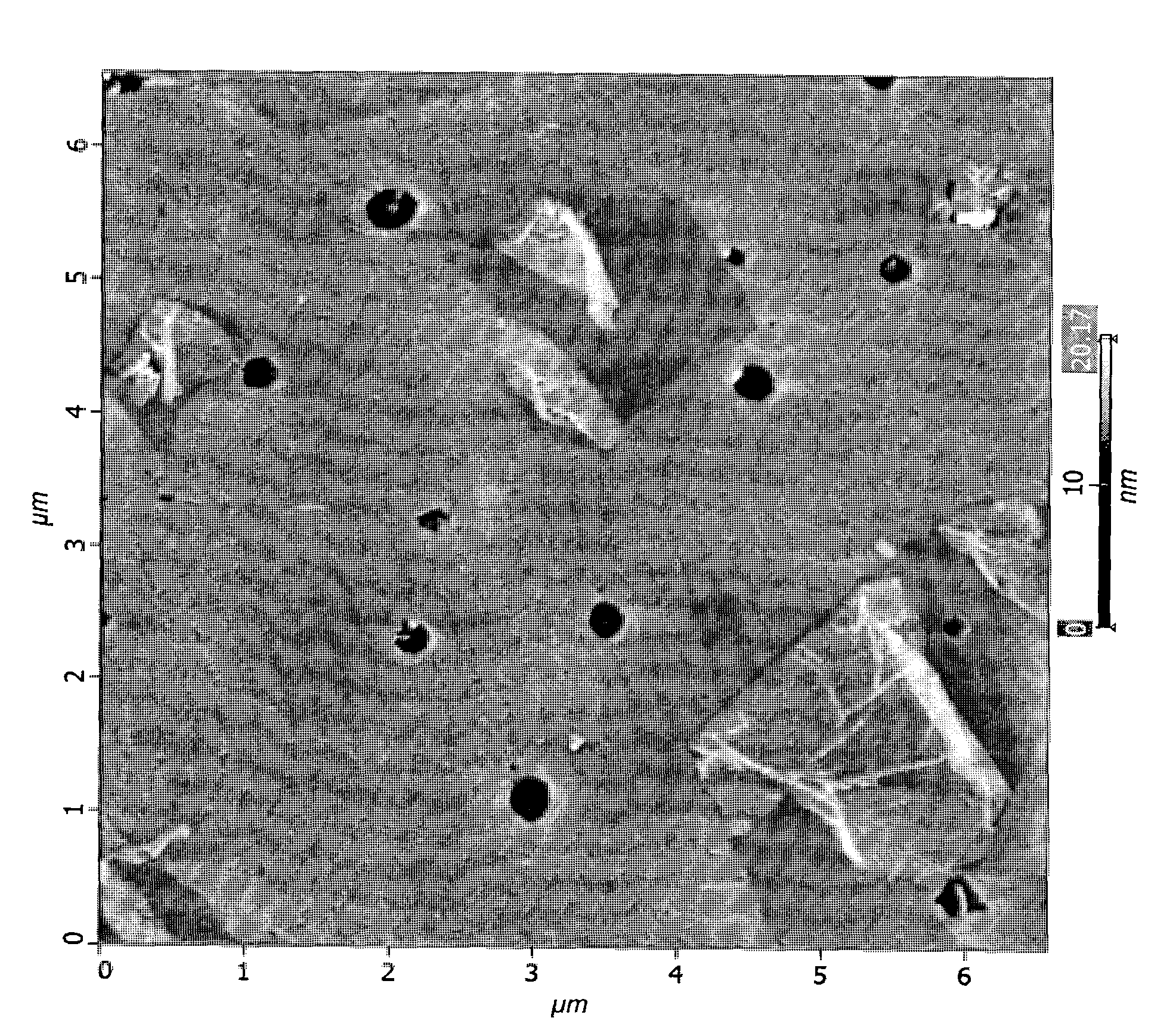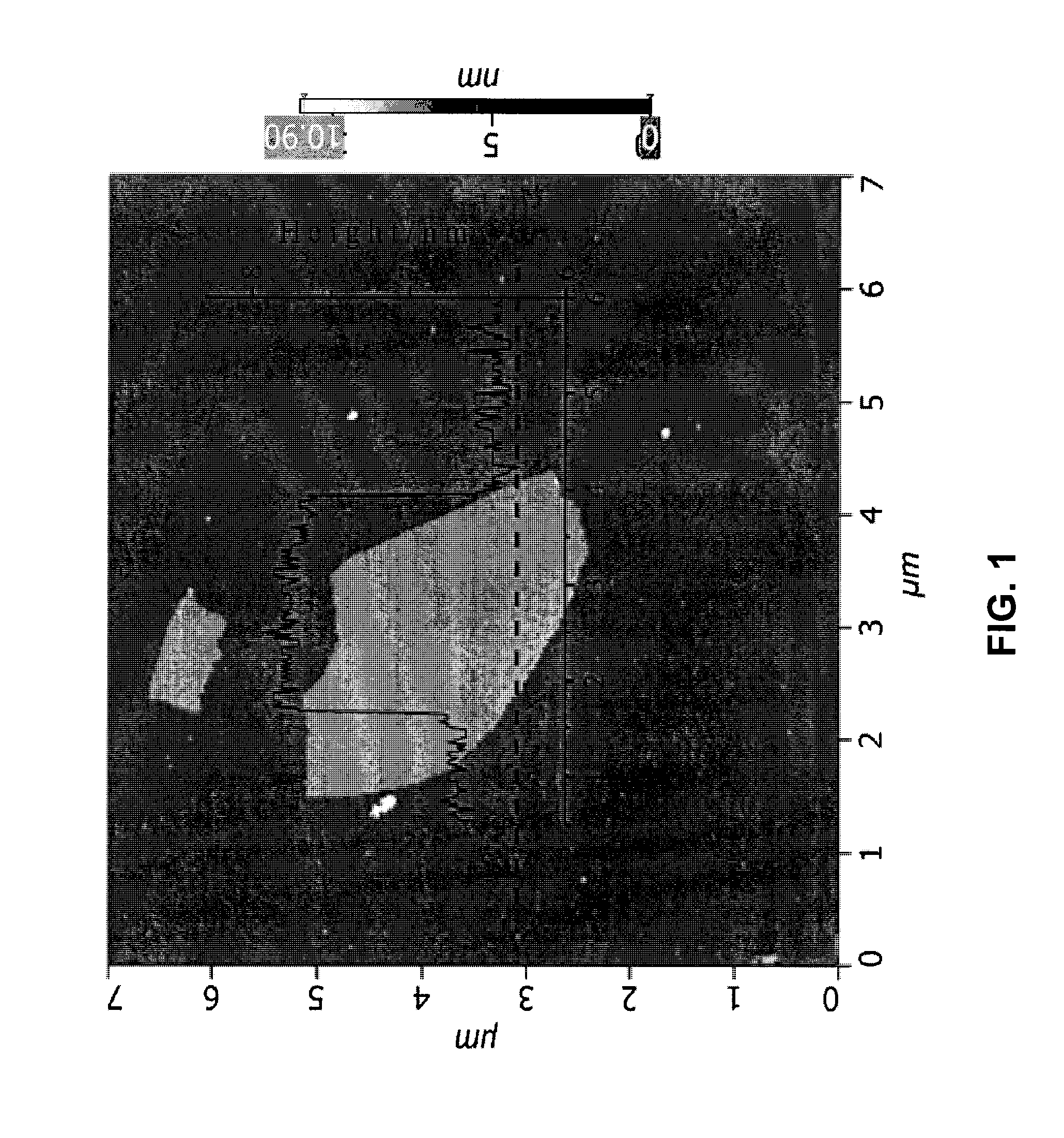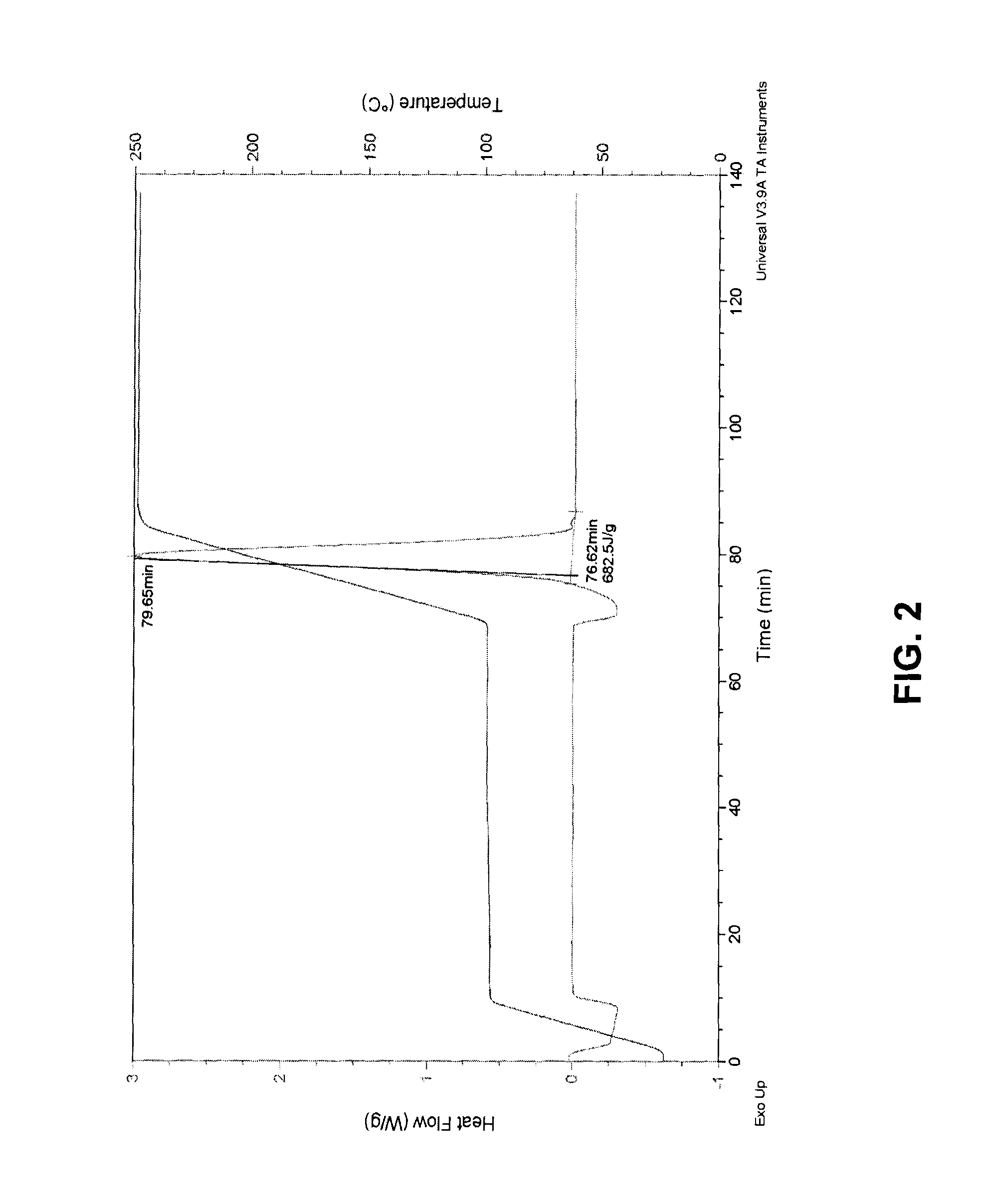Method for making polymer composites containing graphene sheets
a graphene sheet and composite material technology, applied in the direction of carbon-silicon compound conductors, non-metal conductors, conductors, etc., can solve the problems of high energy and time consumption, difficult large-scale application of single-layer graphene sheets many micrometers in size, and high processing cost, etc., to achieve the optimal macroscopic performance of products, improve processing efficiency, and improve the effect of performan
- Summary
- Abstract
- Description
- Claims
- Application Information
AI Technical Summary
Benefits of technology
Problems solved by technology
Method used
Image
Examples
working examples
NON-LIMITING WORKING EXAMPLES
Materials and Methods
Oxidation of Graphite.
[0046]Graphite oxide was prepared by the Hummers method [10]. First, 4 g sodium nitrate was added to 184 mL sulfuric acid and stirred until completely dissolved. Natural flake graphite (Asbury Carbons, Asbury, N.J., grade 3243, 99.5%) was added under vigorous stirring to avoid agglomeration. The solution became dark. After the graphite was well dispersed, 24 g of potassium permanganate were added slowly under stirring. During this process, the temperature can rise rapidly, creating severe effervescence. Potassium permanganate was added slowly enough to keep the temperature below 100° C. The suspension became thicker, turning into a slurry. The color turned from black to dark brown. After completion of the reaction, the slurry was cooled down. Subsequently, 400 mL of de-ionized water was added to the still very acidic solution, leading to an increase of temperature. After the temperature decreased to room tempera...
example 1
[0054]Just as bulk graphite oxide can be thermally reduced, it can also be reduced in its exfoliated version-graphene oxide-in situ when it is already incorporated into a polymer as disperse single-layer sheets by heating the composite. Using TGA, the weight change of polymer-graphene oxide composites is monitored to verify the reduction occurs within the polymer. In a first step, TGA was performed on a film of the polymer Plasdone® C-17 (a polyvinyl pyrrolidone polymer available from International Specialty Products Inc., Wayne, N.J.) in the absence of any filler particles (see FIG. 4). The sample was first heated to 110° C. and held for 2 hours. All of the water in the sample, 14.35% by weight, was evaporated in the first few minutes. The sample was then heated to 150° C., the temperature at which graphene oxide would be reduced. The temperature was held at 150° C. for 2 hours, and there was no further weight change. When the temperature was increased to 250° C. and held for three...
example 2
[0056]The steps of Example 1 were repeated with a different polymer, Plasdone® S-630, a polyvinyl pyrrolidone-vinyl acetate copolymer available from International Specialty Products Inc., Wayne, N.J.). FIG. 6 shows the TGA of a film of Plasdone® S-630 with no added graphene oxide. Again, the water is all lost very quickly, at 110° C. As the temperature is increased, there is no observed weight change until the temperature reached 225° C., at which point the polymer began to degrade. The same experiment was performed on a composite of Plasdone® S-630 and graphene oxide (see FIG. 7). The water was lost quickly at 110° C., as was observed with the neat polymer film. In contrast to the results with the neat polymer film, however, the TGA showed a loss of weight for the composite polymer when the temperature was increased to 140° C.; not to be bound by any particularly theory, but this can be attributable to the reduction of graphene oxide to produce graphene. The rate of weight loss slo...
PUM
| Property | Measurement | Unit |
|---|---|---|
| temperature | aaaaa | aaaaa |
| temperature | aaaaa | aaaaa |
| thickness | aaaaa | aaaaa |
Abstract
Description
Claims
Application Information
 Login to View More
Login to View More - R&D
- Intellectual Property
- Life Sciences
- Materials
- Tech Scout
- Unparalleled Data Quality
- Higher Quality Content
- 60% Fewer Hallucinations
Browse by: Latest US Patents, China's latest patents, Technical Efficacy Thesaurus, Application Domain, Technology Topic, Popular Technical Reports.
© 2025 PatSnap. All rights reserved.Legal|Privacy policy|Modern Slavery Act Transparency Statement|Sitemap|About US| Contact US: help@patsnap.com



